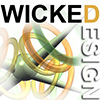Our clients often want to present what-if design scenarios. Using real world props and materials for this purpose can be expensive and cumbersome. Using 3D tools, conceptual interior design can be accomplished virtually. Doing so save time, money and resources. The added benefit of using 3D for design is that the model can be viewed from any angle, it can be presented with any type of lighting and use fabrics and materials within the design.
The goal of this Loudoun project was to present a bedroom with all aspect of interior design before any furniture or accessories were purchased. The project began with a photography shoot of the actual bedroom. Various angles were captured to obtain the best presentation, allowing the room design to show in the best manner possible. Once a photo was chosen, it was imported into a 3D modeling and rendering program. The captured image was then used as a backdrop to ensure proper alignment when designing the 3D objects. The photo below is the chosen angle for this purpose.
The 3D modeling began using a specific list of furniture, the rug and room accessories selected by the Interior Designer. The objects were recreated in 3D. Photos of the chosen materials were then applied to the 3D objects, to provide the most realistic result possible. In this case, a photo of the rug was applied to a square plane object that rest beneath the bed. The wood bed frame uses a particular type of wood, while the pillows and cover are represented with specific materials. Special attention was paid to the colors to ensure that the whole room flowed. The vases on shelves match the end table lamps, and carry forward the warm quality of the beautiful wood floor.
After the 3D scene was modeled, it was exactly matched to the perspective of the photograph. This was critical for making the final rendering look as realistic as possible. While doing so, the lighting factors in the modeling program had to match that of the photograph. The example below does not yet feature the proper perspective. To accomplish this, the 3D camera field of view was calibrated with that of the original photograph, seen in the final presentation (see image 3 below).
The image below shows an overlay of the raw 3D objects, presented in wireframe mode, combined with the rendered version. This further highlights the 3D design process for the purpose of demonstration.
The final rendering below shows how all of the steps came together. Note the difference in perspective of the bedroom set. The image above is somewhat isometric, while the image below features proper viewpoint registration with the room photo. Proper lighting has been applied to increase the realistic feel of the rendering. The vases and planters were modeled and placed into the final piece as part of the original interior design. The plants themselves were cut into place using Photoshop, as a final touch.
The benefits of this approach to interior design, or remodeling, is that many types of scenarios can be addressed before any real world object is purchased. The design can be reviewed from any angle, or time of day. Using 3D is a cost effective means to flesh out ideas well before large sums of money are spend to change a room.
Are you interested to learn how your project can benefit from this design approach? Wicked Design would love to hear from you. Contact us for a consultation and we’ll bring your vision to life: info [@] wickedesign.com or 703 470 6029. Whether you live in Loudoun County, or Hong Kong, we’d love to hear from you. Learn more about the Graphic Design services offered by Wicked Design here: Graphic Design and 3D Modeling.







